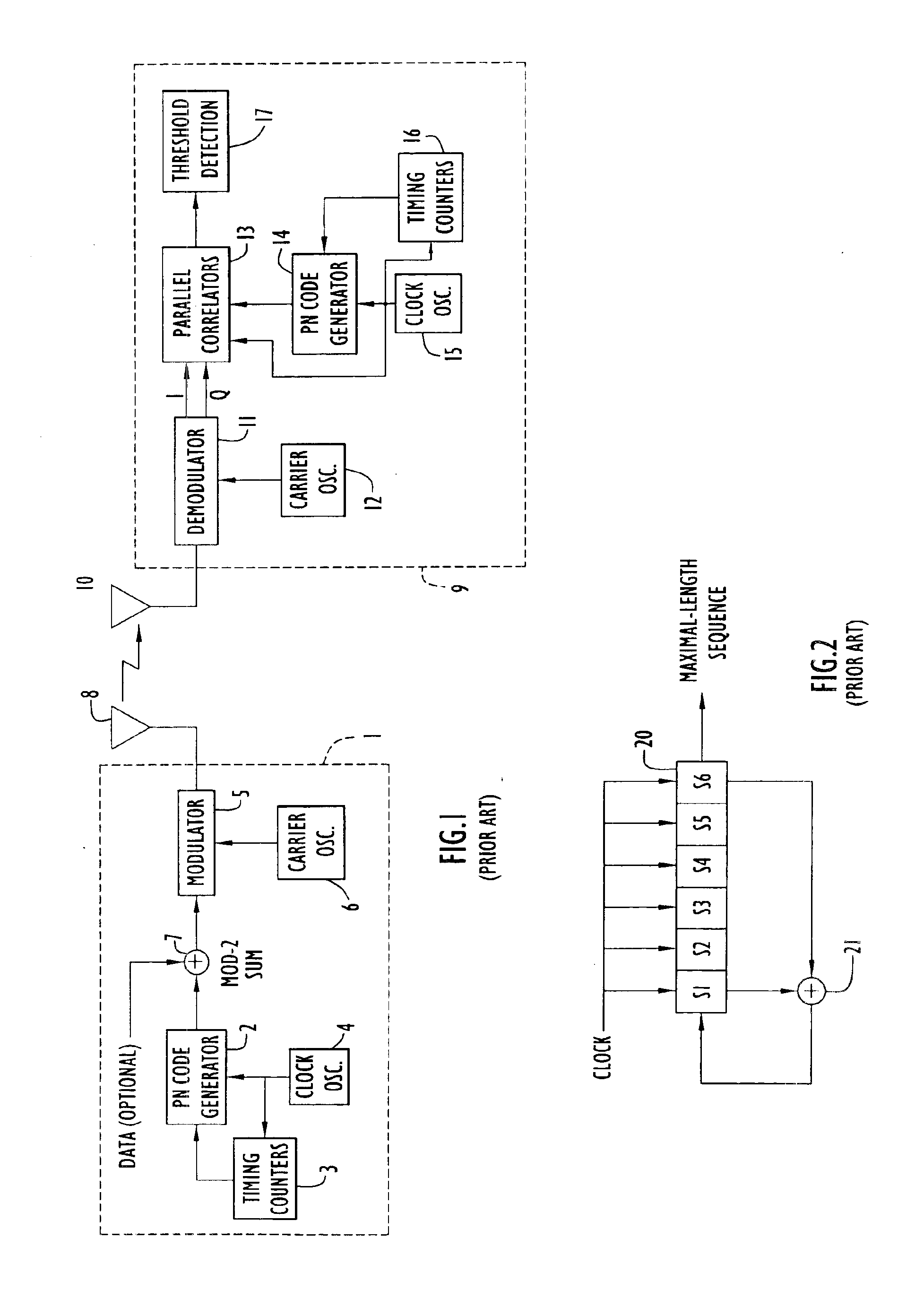Method and apparatus for detecting a stationary dither code
a technology of dithering code and code, applied in the field of data communication systems, can solve the problems of difficult acquisition, difficult acquisition, unwieldy receiver, etc., and achieve the effect of reducing the cost of acquisition
- Summary
- Abstract
- Description
- Claims
- Application Information
AI Technical Summary
Benefits of technology
Problems solved by technology
Method used
Image
Examples
Embodiment Construction
enerator.
[0027]FIG. 3A shows an example boundary dither code.
[0028]FIG. 3B shows an example rotation dither code.
[0029]FIG. 3C shows alignments of a reference code with the boundary dither and rotation dither codes shown in FIGS. 3A and 3B that a receiver might use to detect either of the dither codes shown in FIGS. 3A and 3B.
[0030]FIG. 4 is a block diagram of a receiver according to one embodiment of the invention.
[0031]FIG. 5A is a block diagram of the maximum likelihood decoder shown in FIG. 4.
[0032]FIG. 5B is a block diagram of the maximum likelihood decoder shown in FIG. 4, according to another embodiment of the invention.
[0033]FIGS. 6A-D are code timing diagrams for showing the operation of the maximum likelihood decoder shown in FIG. 5.
[0034]FIGS. 7A and B are flowcharts illustrating a method of detecting a stationary dither code according to the invention.
[0035]FIG. 8 is a block diagram of the maximum finder shown in FIGS. 4 and 5.
[0036]FIG. 9 is a conceptual diagram for sho...
PUM
 Login to View More
Login to View More Abstract
Description
Claims
Application Information
 Login to View More
Login to View More - R&D
- Intellectual Property
- Life Sciences
- Materials
- Tech Scout
- Unparalleled Data Quality
- Higher Quality Content
- 60% Fewer Hallucinations
Browse by: Latest US Patents, China's latest patents, Technical Efficacy Thesaurus, Application Domain, Technology Topic, Popular Technical Reports.
© 2025 PatSnap. All rights reserved.Legal|Privacy policy|Modern Slavery Act Transparency Statement|Sitemap|About US| Contact US: help@patsnap.com



